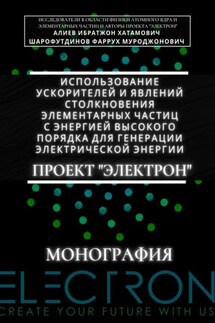Все науки. №10, 2024. Международный научный журнал - страница 8
Each module is a printed circuit board (PCB) that connects to the backplane with pin sets. The backplane supplies the modules with DC voltage of +/-5 V and +/-12 V. Associated pins connect between modules to create a bus. VMEbusmodulescommunicatethroughdigital signals bussed over the back plane and data transfer occurs by direct memory access. Analog input and output may occur through the front panel using LEMO 00, ribbon, or MCX connectors. VME bus modules offer the same utility as NIM and CAMAC ones, including power supplies, discriminators, and amplifiers; however, parameters are often set through software control, allowing automated and/or remote con trol of parameters. The GUI (Graphical User Interface) software may reside on an embedded computer within a VME bus module. Interfacing with PCs occurs by means of USB, PCI, or other connections. VME bus can be extended to multicrate systems through bridge cards. Other protocols such as Ethernet connections can be used to link sub-racks into a common network or with a single PC. Overcoming the limitations and limits of traditional analog acquisition chains, new waveform digitizers have been developed [5, 6, 7, 8, 9]. They consist in many models differing in sampling frequency, resolution, number of channels, form factor, and memory size among others. In parallel with hardware development, different efforts were dedicated to developing DPP (Digital Pulse Processing) algorithms [11, 12, 13, 14]. A DPP algorithm can be installed in an FPGA (Field Programmable Gate Array) of the digitizer allowing online analysis and implementing new acquisition methods that go beyond the simple waveform record. Regarding to the waveform digitizers, the basic principle is to acquire the complete pulse, convert it to digital, by using a fast ADC, and then perform calculations on the digital data directly on an FPGA available on board. A dig itizer with DPP becomes thus a new instrument that represents a fully digital replacement of most traditional modules such as discriminators, S/MCA, QDC (Charge (Q) to Digital Converter), TDC (Time to Digital Converter), among others. Digitizers are available in different form factors (VME, NIM, and desk top) and represent the state-of-the-art result of all experiences collected in pulse processing and data acquisition systems.
MARS description
MARS (Modular Apparatus for nuclear Reactions Spectroscopy) is composed of detection, electronic, and acquisition systems. MARS electronics combine desktop and VME form factors. It is a portable and versatile spectrometer for measuring angular and energy distributions of charged particles outgoing nuclear reactions. Its modular and advanced design allows components to be exchanged (e.g. change detectors to measure different types of radiation), besides applying different types of digitizers, firmware, and then acquisition systems. In par ticular, the application of different firmware allows for different pulse analysis techniques.
Figure 1: MARS electronic system. It is based exclusively on desktop and VME form factors from CAEN SpA.
2.1. MARS detection system
The detection system is composed of 16 semiconductor planar totally de plected silicon (Si) SBD (Surface Barrier Detectors) from ORTEC with active areas of 50 mm2. Eight of them have 15 µm thickness (model ED-35-050-15), and the other eight have 500 µm thickness (model TB-15-050-500) (nominal values). These detectors are suitable for the identification of charged particles and their respective high-resolution spectroscopy. The manufacturer specifies a resolution of 15 keV for 241Am alphas (5.486 MeV (corresponding to 85% of intensity)) [15, 16].









